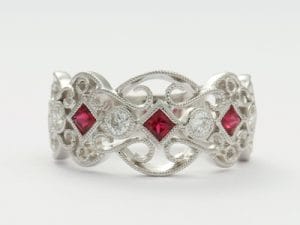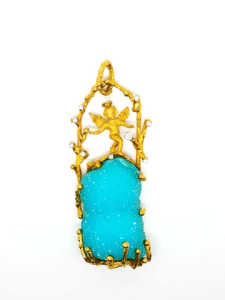The Jewelry Forecast for 2026: A Functional, Ethical, and Sculptural Shift

The 2026 jewelry market is defined by a convergence of three powerful pillars: Sustainability as Non-Negotiable, Sculptural and Fluid Form, and Adornment as Intentional Storytelling. The focus has moved from mere decoration to a disciplined, conscious, and meaningful investment.
I. The Functional Pillar: Sustainability and Transparency
The most critical and sustained functional requirement for the industry is a demonstrable commitment to ethical and sustainable practices. This is no longer a marketing trend but a core operational compliance issue, driven by an environmentally and ethically conscious consumer base.

1. Material Compliance and Innovation:
- Recycled and Reclaimed Metals: The gold standard for sourcing now is 100% certified recycled gold, silver, and platinum. Major brands are making public commitments to complete shifts by 2026, seeing circularity as the ethical minimum.
- Lab-Grown and Synthetic Gems: The rise of lab-grown diamonds, sapphires, emeralds, and rubies is transformative.
- Functional Benefit: They offer identical chemical, physical, and optical properties to their mined counterparts while guaranteeing conflict-free sourcing and a significantly reduced environmental footprint.
- Aesthetic Benefit: Their cost-efficiency allows for larger, more consistent, and more vivid stones in everyday fashion and fine jewelry, driving the trend toward affordable, high-quality “Accessible Luxury.”
- Traceability and Provenance: Consumers require full supply chain transparency. Brands that utilize blockchain technology or other digital methods to allow customers to trace a gem or metal from its source to the finished piece will lead the market in establishing functional trust.
- Bio-Based and Alternative Materials: A focus on innovative, lightweight, and nature-derived materials is growing. Expect to see an increase in recycled glass, ocean plastic, ethically-sourced wood, resin, and non-traditional alloys like titanium and tungsten, all framed with a clear story of ethical sourcing.
2. Functional Adornment:
- The Utility Pendant: Jewelry is adopting utility. Necklaces and pendants are being designed to serve a purpose beyond aesthetics, such as streamlined cases for tucking small essentials, sleek sunglass chains, or functional clasps that are designed to be seen.
- Day-to-Night Versatility: Pieces must seamlessly transition between environments (e.g., hybrid work, digital interaction, evening wear). This prioritizes high-quality, durable materials that can withstand continuous wear, a key functional specification.
II. The Aesthetic Pillar: Sculptural and Fluid Form
The dominant visual trend is one of bold, three-dimensional, and often asymmetrical forms. This is jewelry as miniature architecture, moving away from flat, rigid lines toward organic, tactile expressions.
1. Sculptural Techniques:
- Melted and Fluid Metalwork: Gold and silver are reimagined as if they were liquids. Designs feature smooth curves, melted edges, and surfaces that twist, curve, and fold organically, emphasizing volume and negative space.
- Matte and Textured Finishes: High-polish finishes are balanced by the prevalence of brushed, satin, sandblasted, and hammered textures. These textural elements add depth, character, and an elevated, artful quality, making even minimalist pieces feel more substantial and unique.
- Exaggerated Volume: Earrings, cuffs, and rings are oversized and substantial—often referred to as “chunky”—yet designed to be lightweight enough for comfortable, everyday wear.
- The Bezel Setting Revival: The bezel setting, where a thin band of metal wraps entirely around a gemstone, is a key aesthetic and functional trend. It provides superior protection for stones (a functional advantage) and offers a sleek, modern, continuous line (an aesthetic advantage).
2. The New Maximalism and Minimalism:
- Maximalism via Layering (The Artful Stack): Stacking remains vital, but it is now done with intentionality. The “Artful Stack” involves combining different scales (chunky and delicate), textures (polished and brushed), and metals (yellow, white, rose, blackened) to create a personalized, curated composition rather than random piling.
- Minimalism as “Quiet Luxury”: The Quiet Luxury or “Stealth Wealth” aesthetic dominates the fine jewelry segment. This is characterized by:
- Subtle Elegance: Timeless silhouettes, classic chains, and bezel-set diamonds.
- Focus on Craftsmanship: The luxury is found in the exceptional quality of the materials and the precision of the cut and finish, not overt branding or excessive size.
III. The Cultural Pillar: Adornment as Storytelling and Meaning
Jewelry in 2026 serves as a powerful medium for expressing personal identity, values, and an emotional connection to the world.
1. Personalized and Symbolic Adornment:
- Hyper-Personalization: The demand for pieces that tell a personal story is paramount. This goes beyond simple initial necklaces to include:
- Symbolic Encoding: Subtle, hidden symbols, lovers’ knots, private numerical codes, coordinates, or secret messages engraved into the metal.
- Meaning-Driven Stacking: Layering pieces that represent different milestones, family members, or personal values.
- Color Psychology: Gemstones are selected for their emotional resonance and symbolism, reflecting the wearer’s current emotional state or aspirations:
- Green: Growth, renewal, and a connection to nature (Emerald, Tourmaline, Tsavorite).
- Blue: Serenity, trust, and healing (Sapphire, Zircon).
- Unique Gemstone Colors: There is a surge in stones with unusual or nuanced color properties, like Alexandrite (color-changing) or Paraiba Tourmaline, signifying uniqueness and a break from convention.
- Nature and Heritage Reimagined: There is a collective desire for grounding. Designs incorporate earth-derived textures (like bark or coral), organic shapes, and a contemporary reinterpretation of heritage motifs, bridging generational style.
2. Pearls Reimagined:
- Organic Imperfection: The classic perfect round pearl is superseded by Baroque, irregular, and imperfectly shaped pearls. This embraces natural form and rejects manufactured uniformity, appealing to the desire for authenticity.
- Modern Context: Pearls are mixed with unconventional materials, such as mixed metals, industrial chains, and enamel, to create a look that is casual, artisanal, and decidedly non-traditional.
In conclusion, the overarching directive for jewelry in 2026 is Intentionality. Every piece must comply with ethical and sustainable sourcing, demonstrate a mastery of sculptural form, and carry a clear, personal, and emotional narrative. Adornment is a rigorous process of self-articulation, not an act of frivolous spending.
